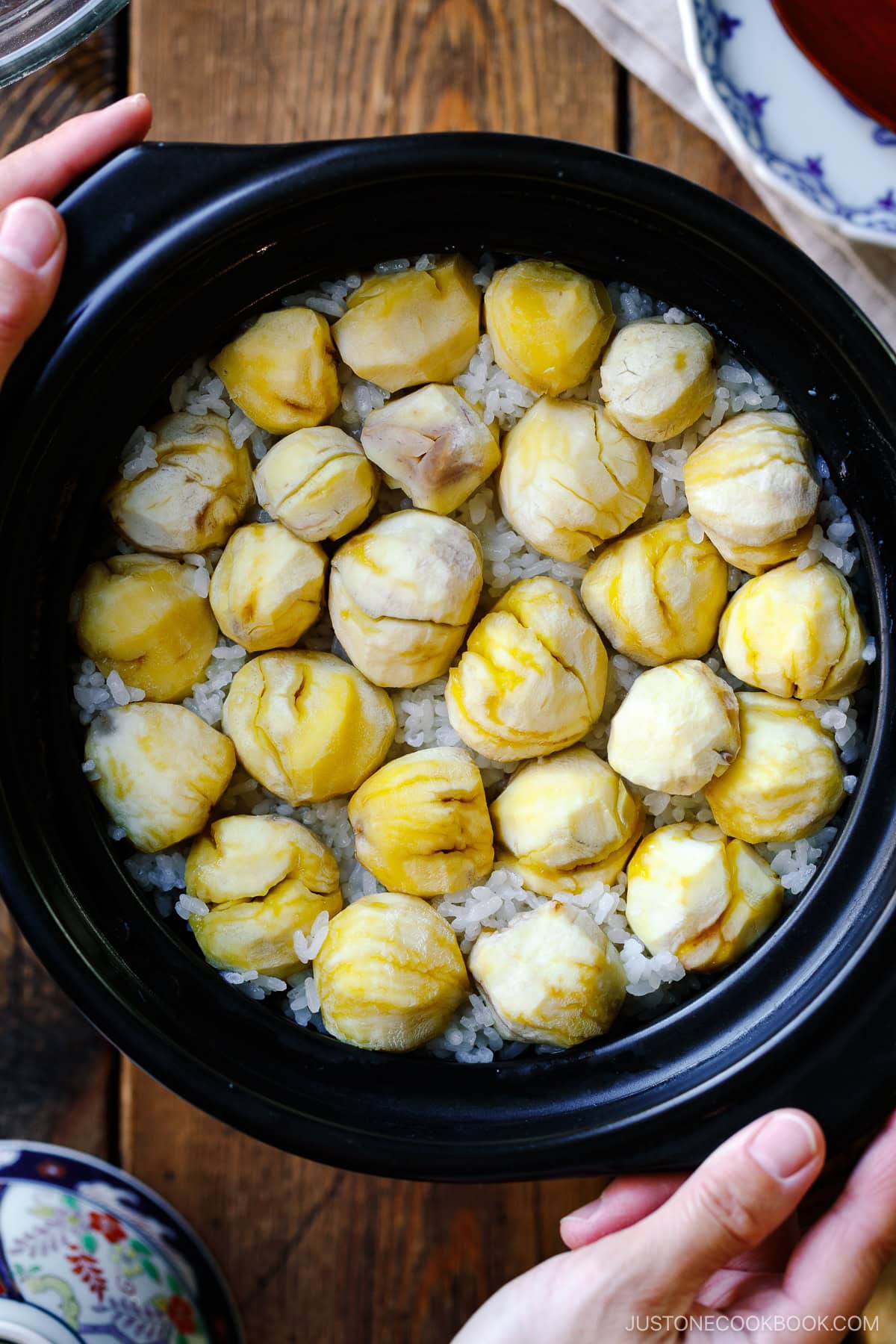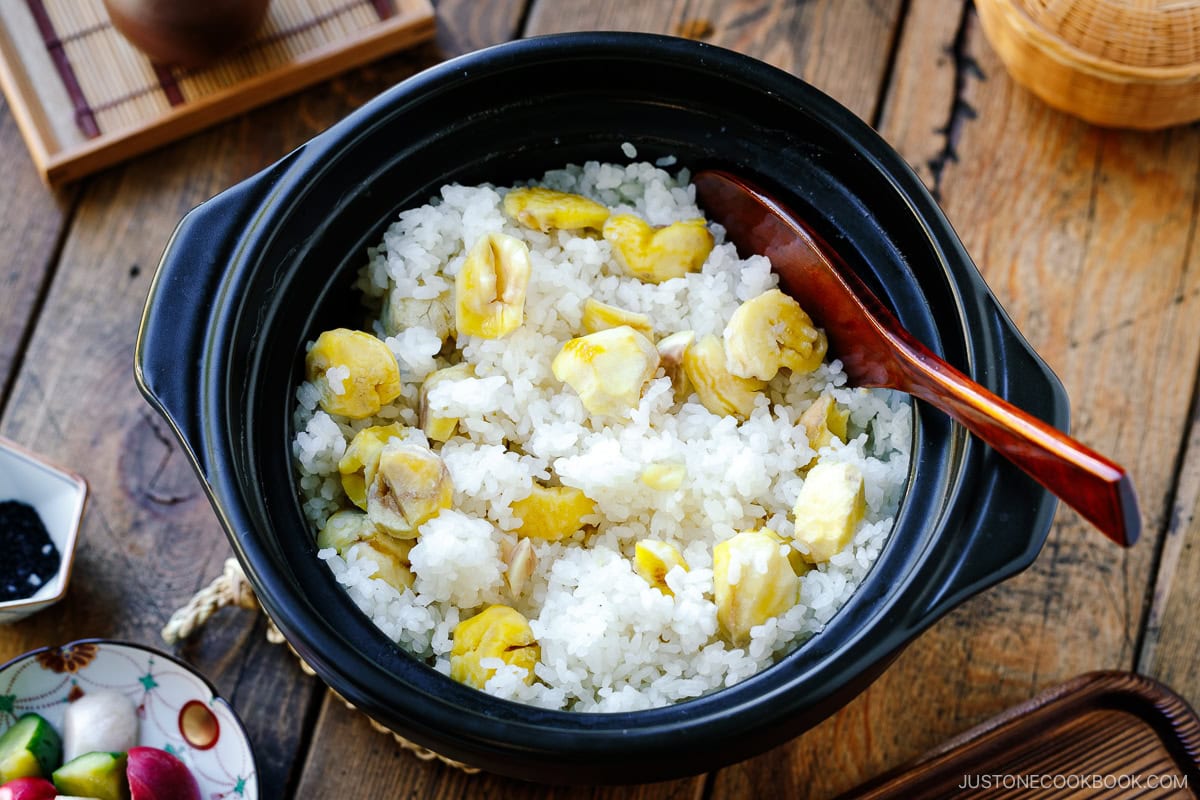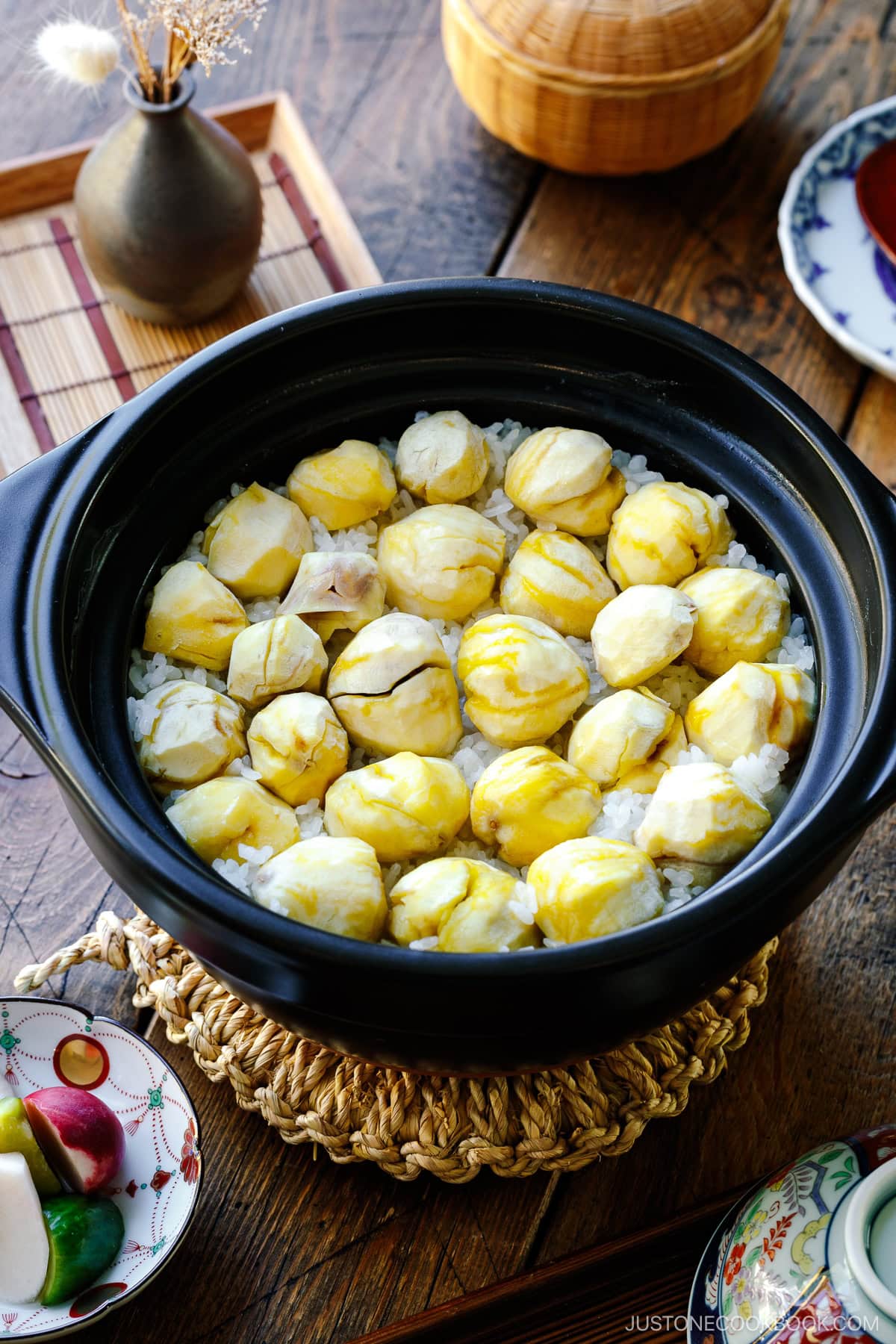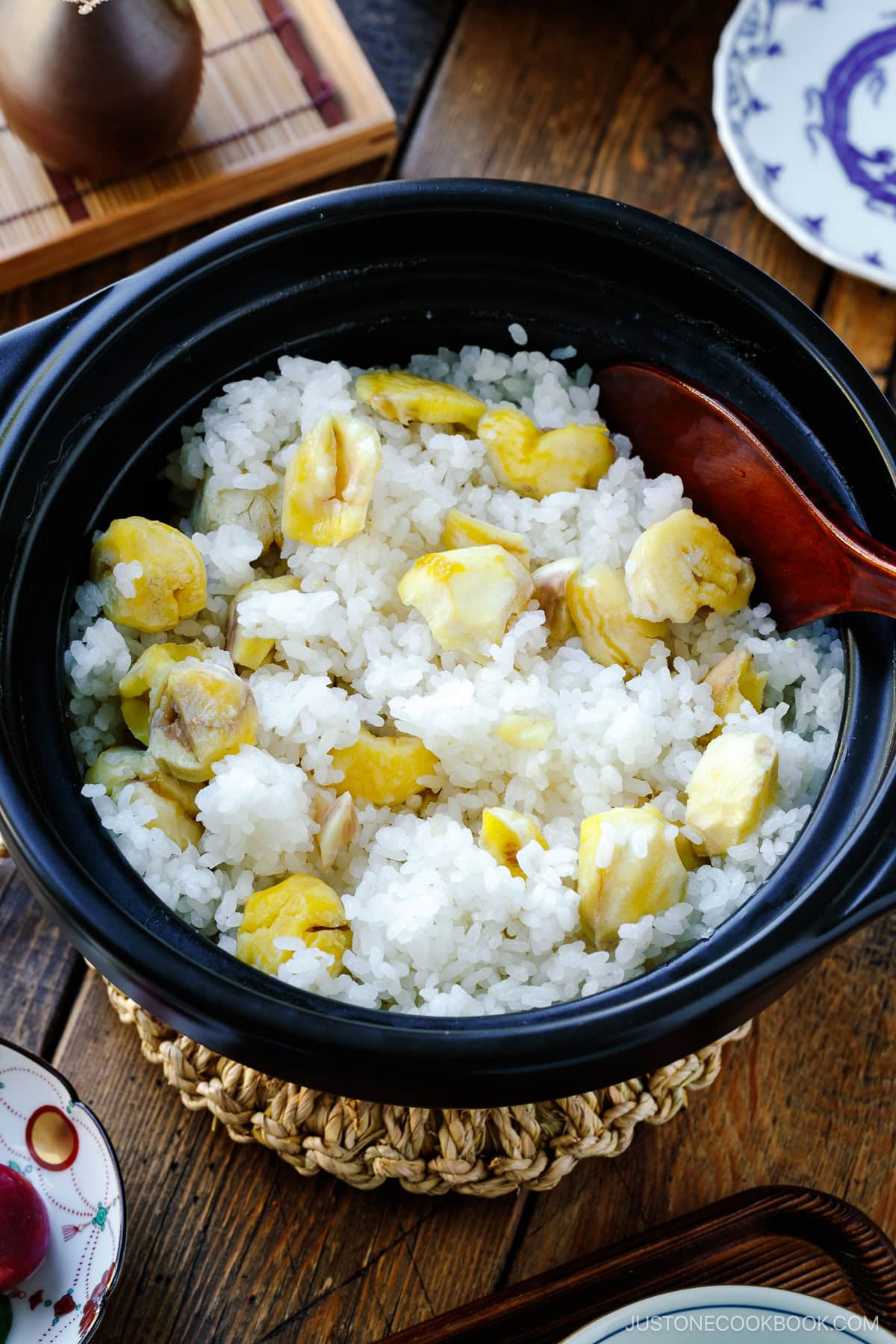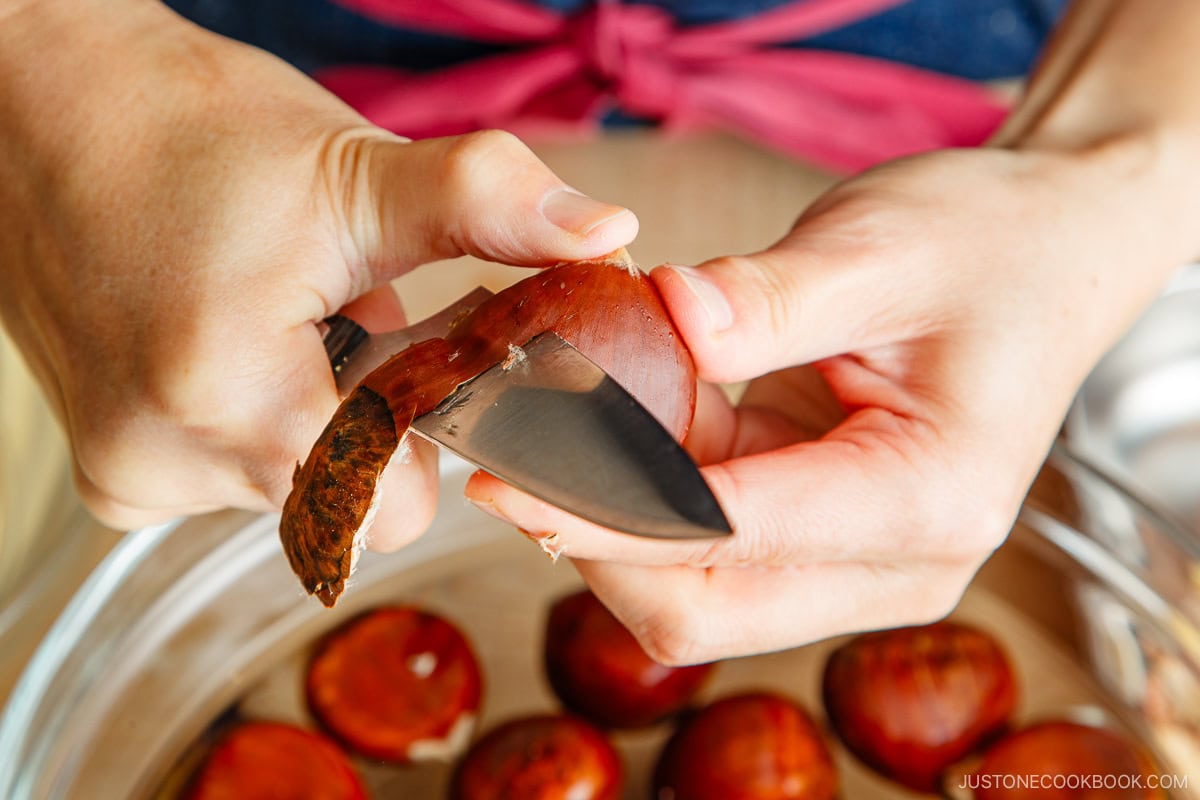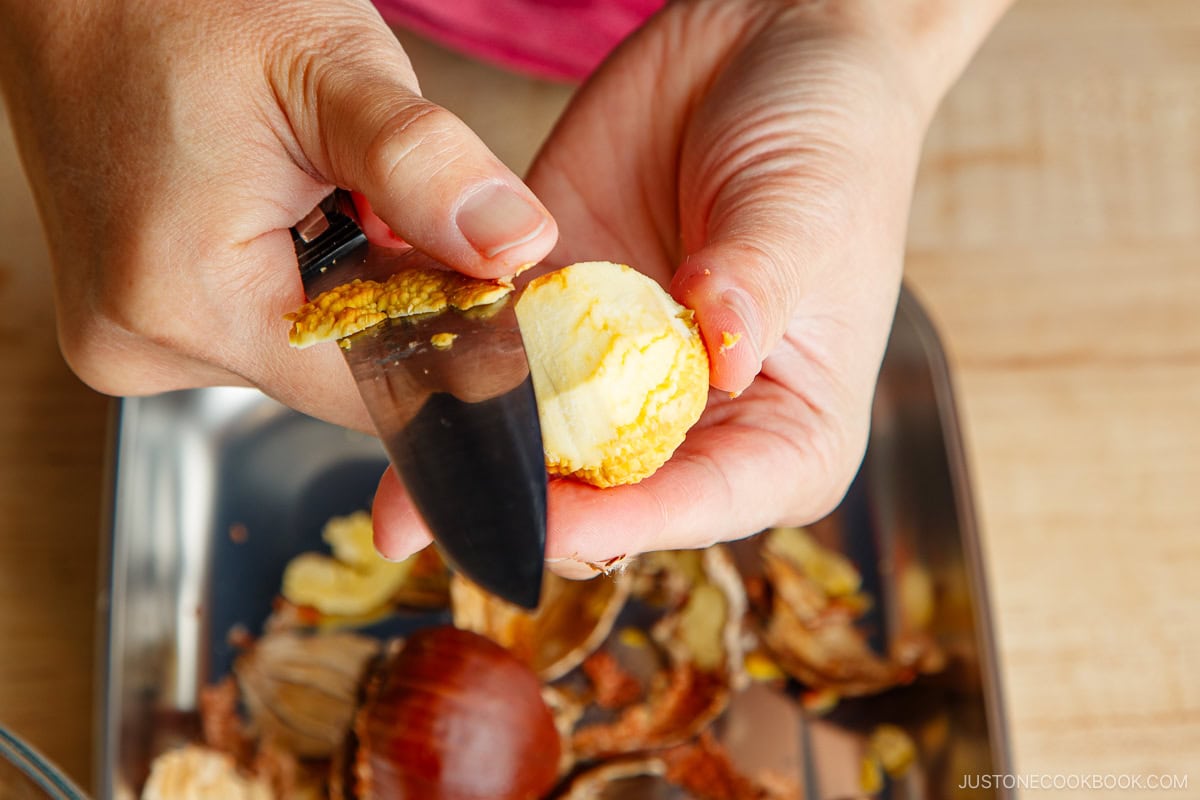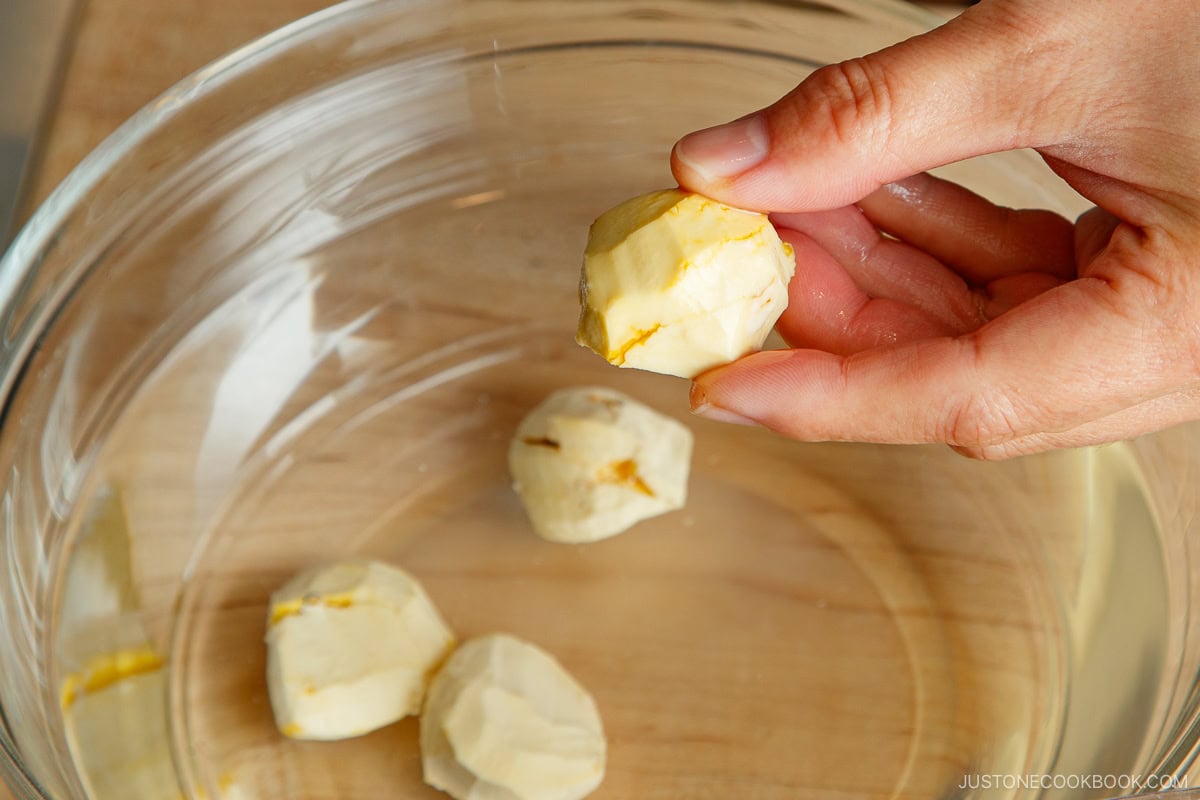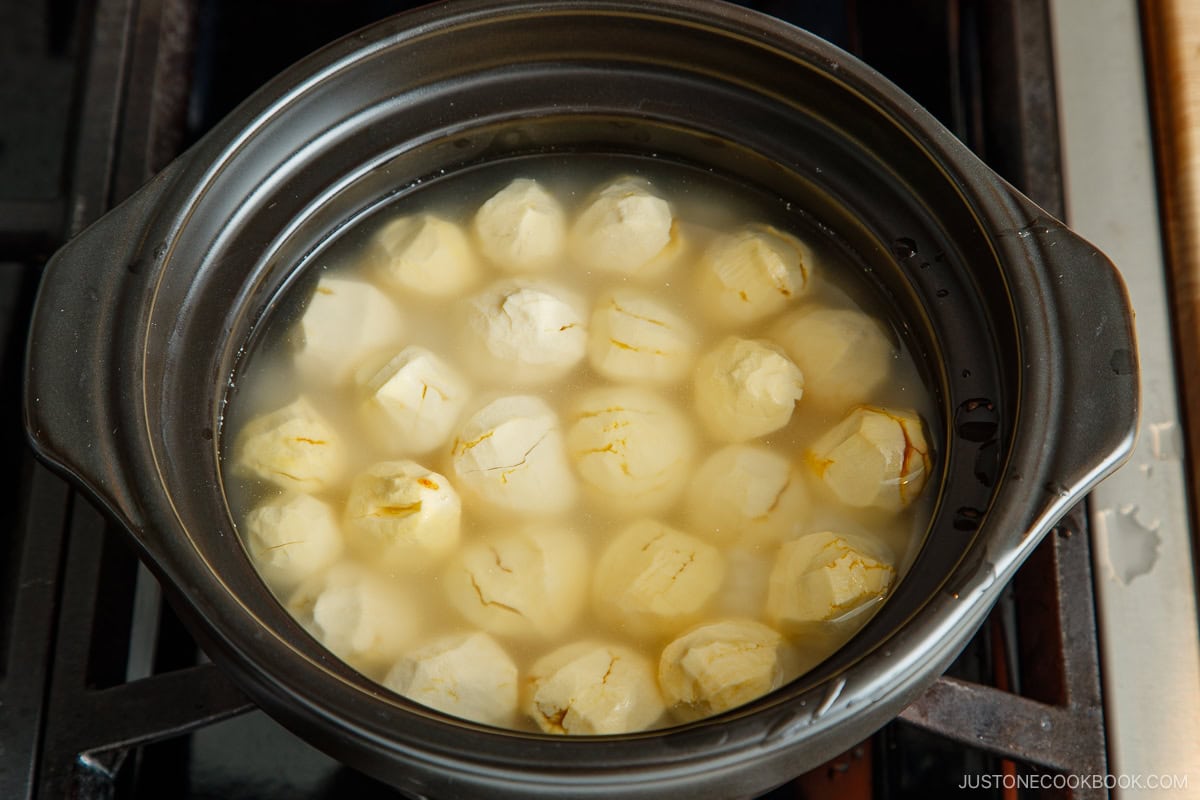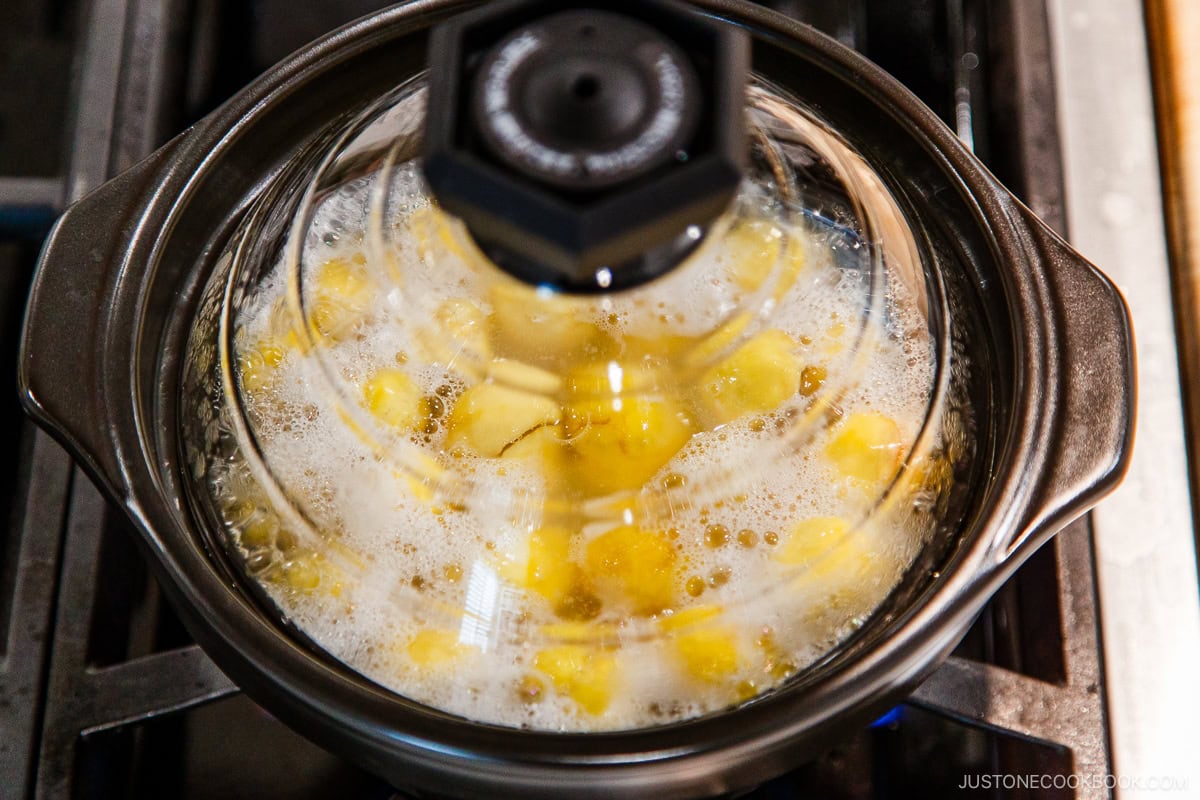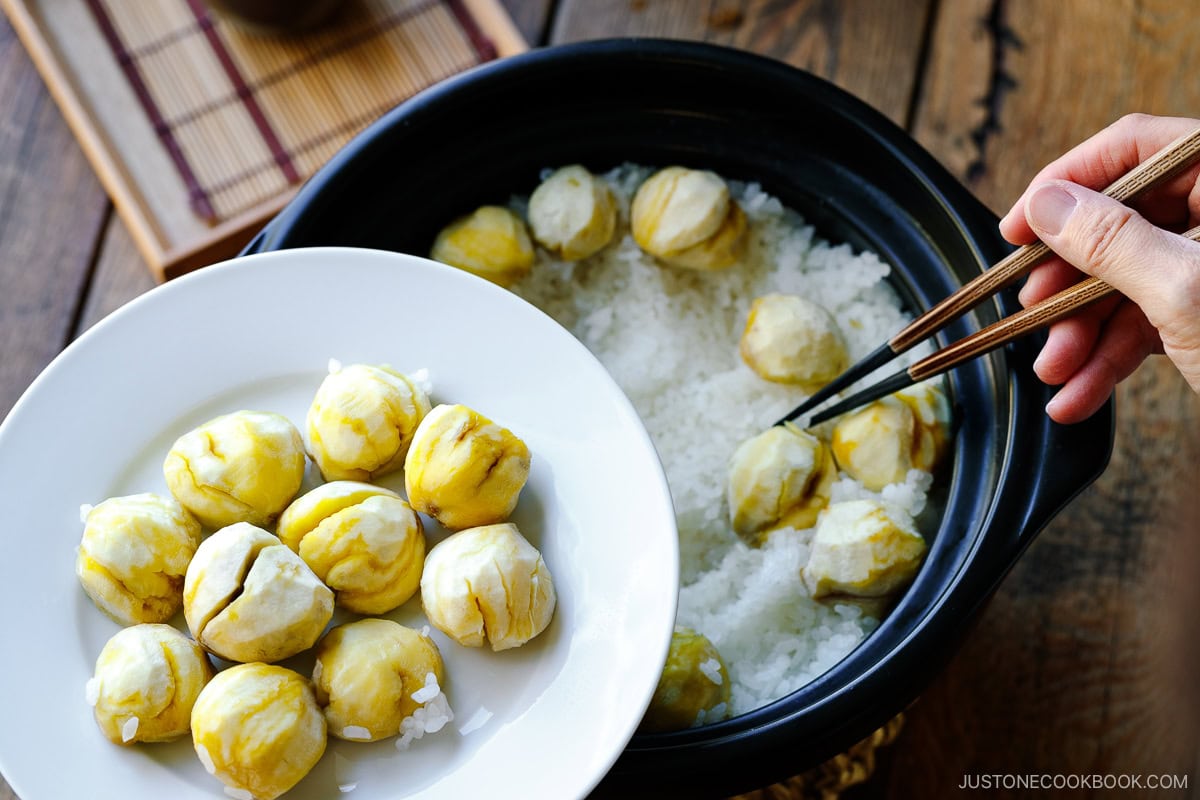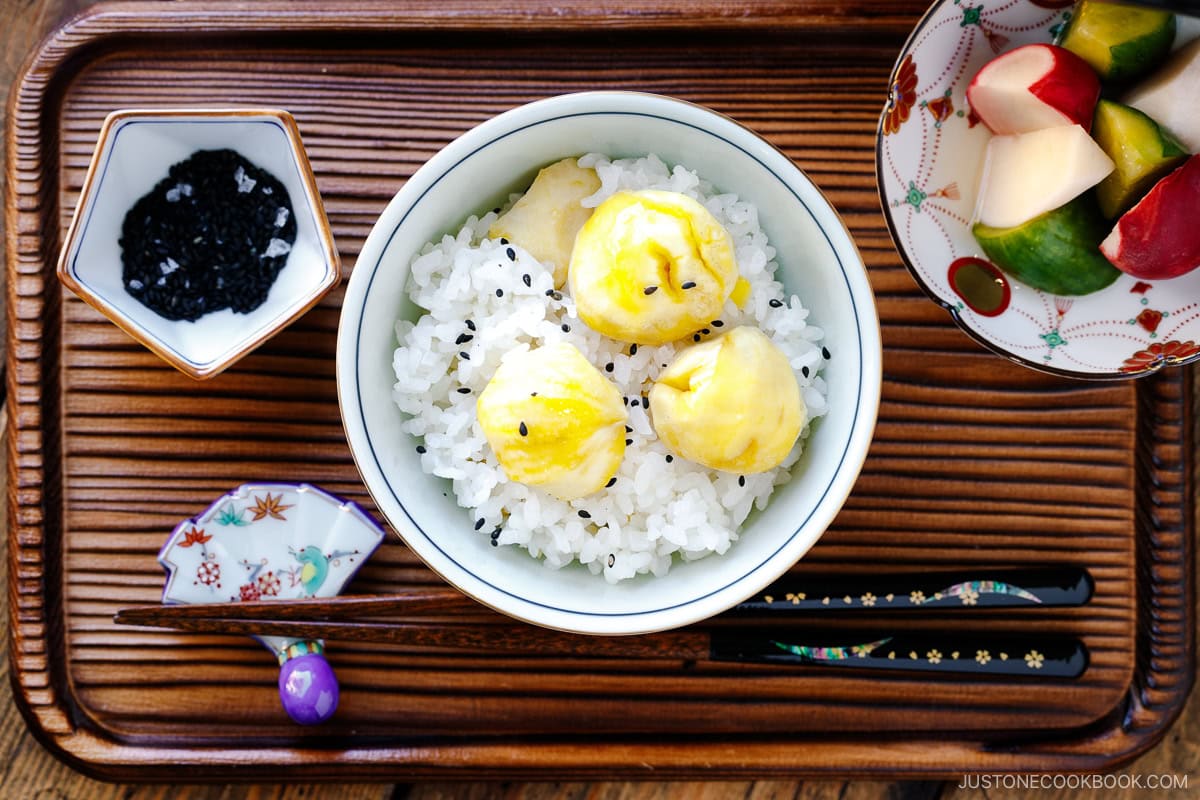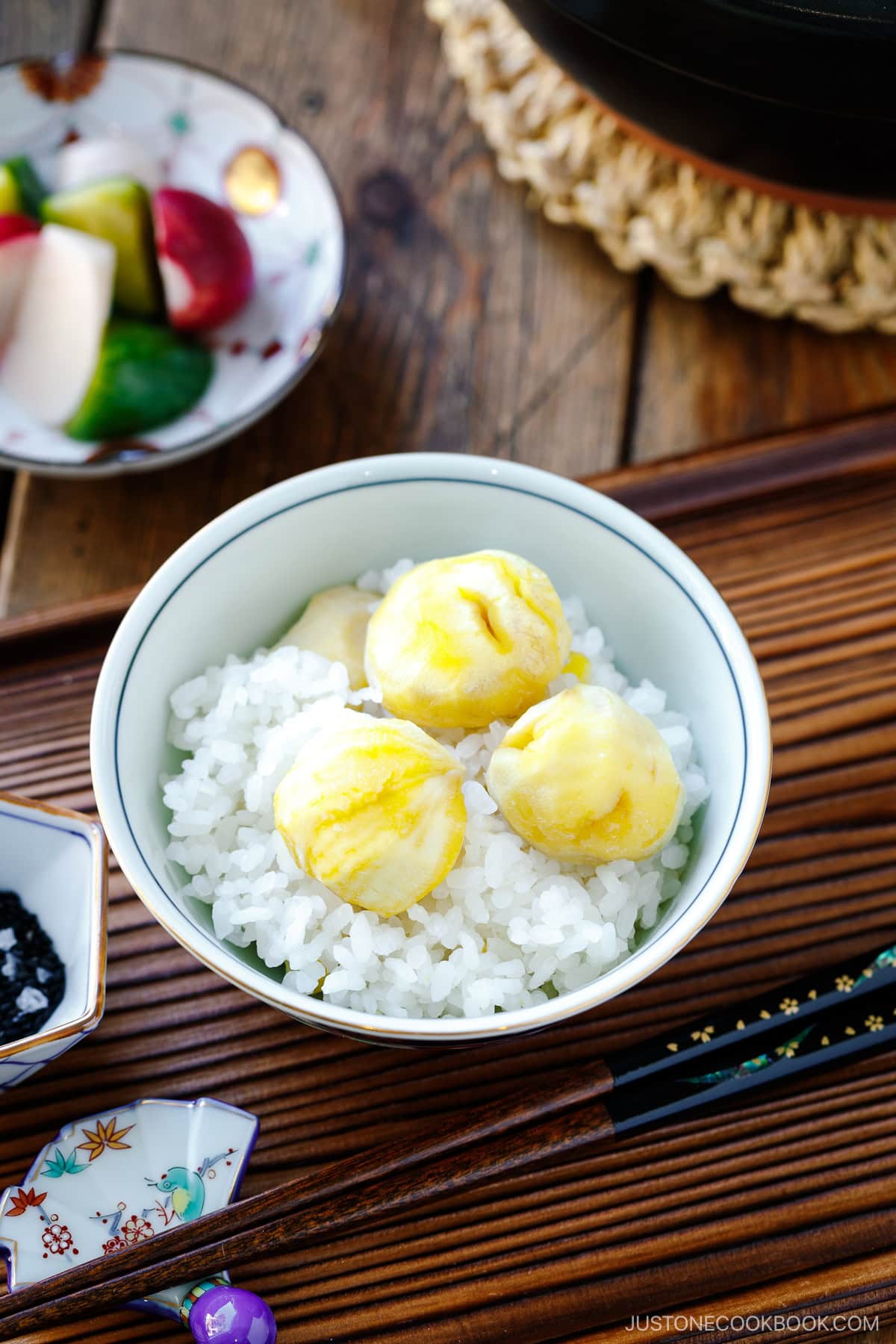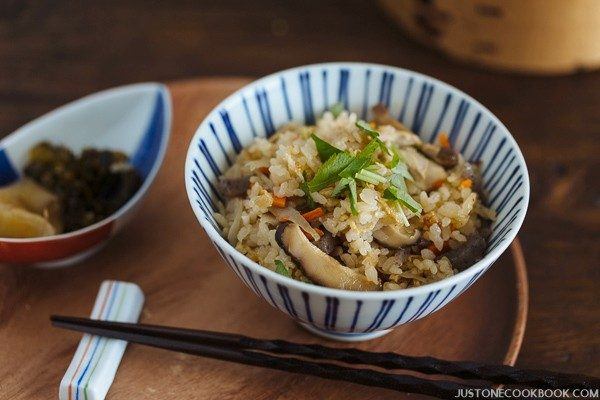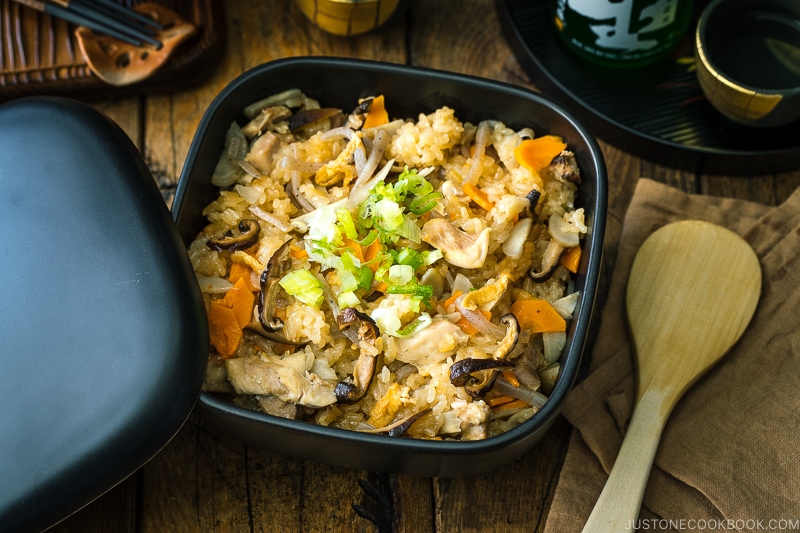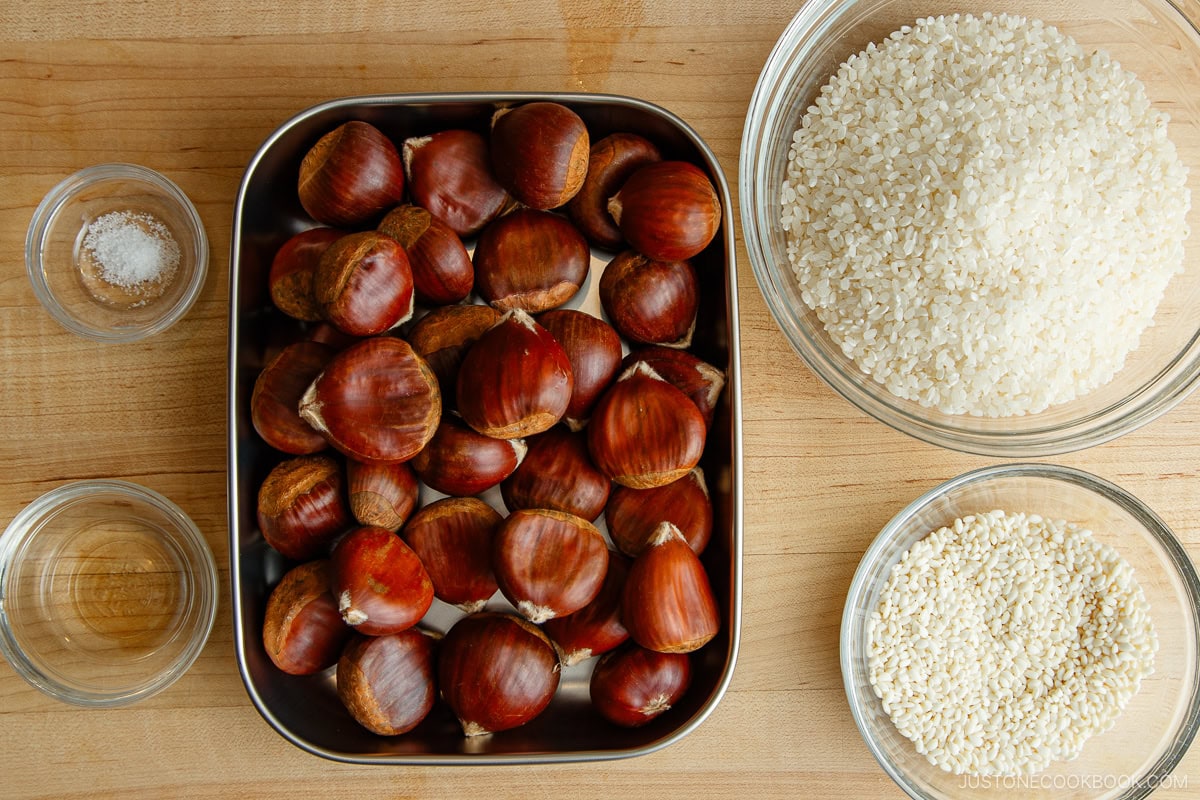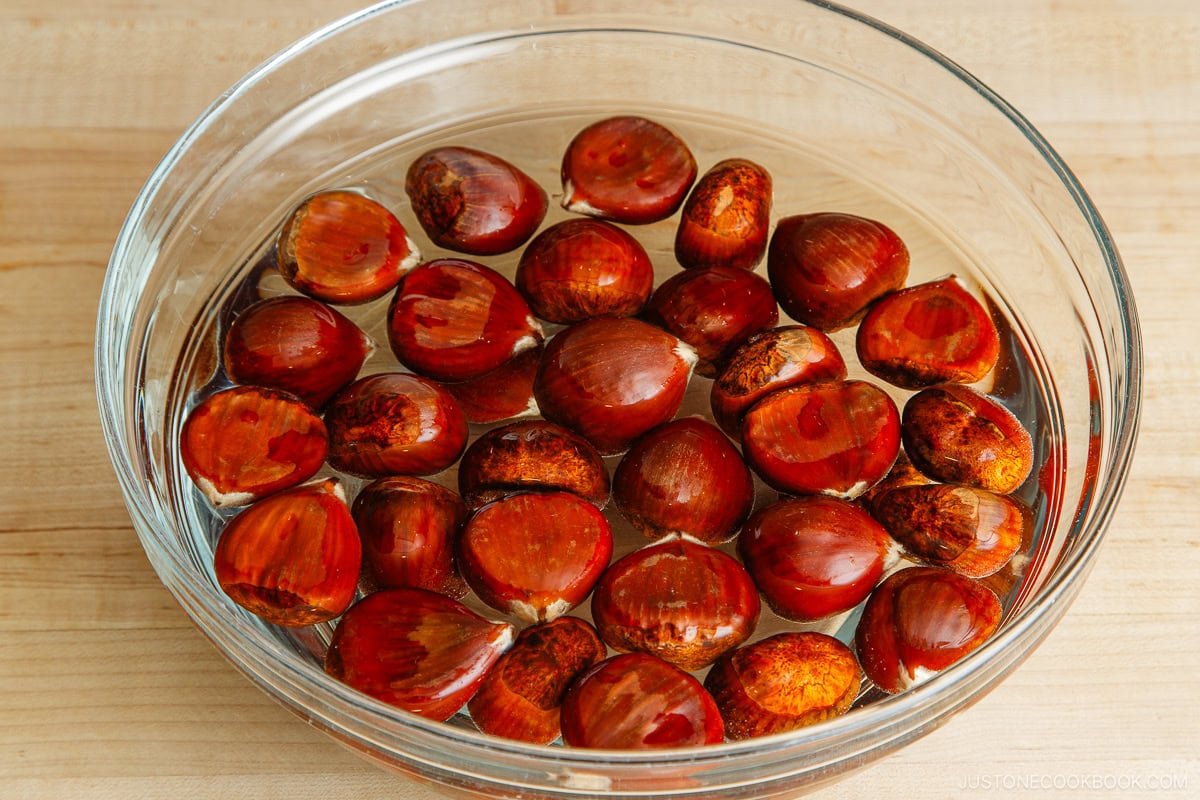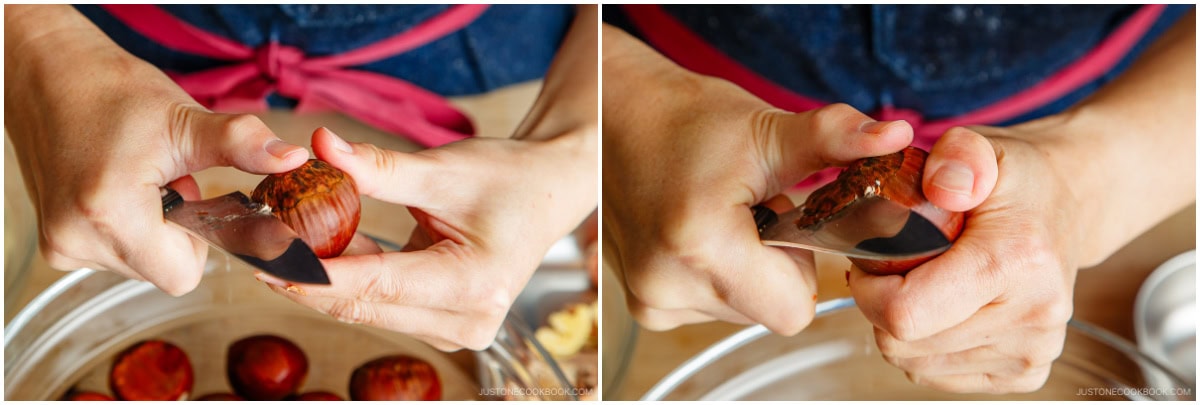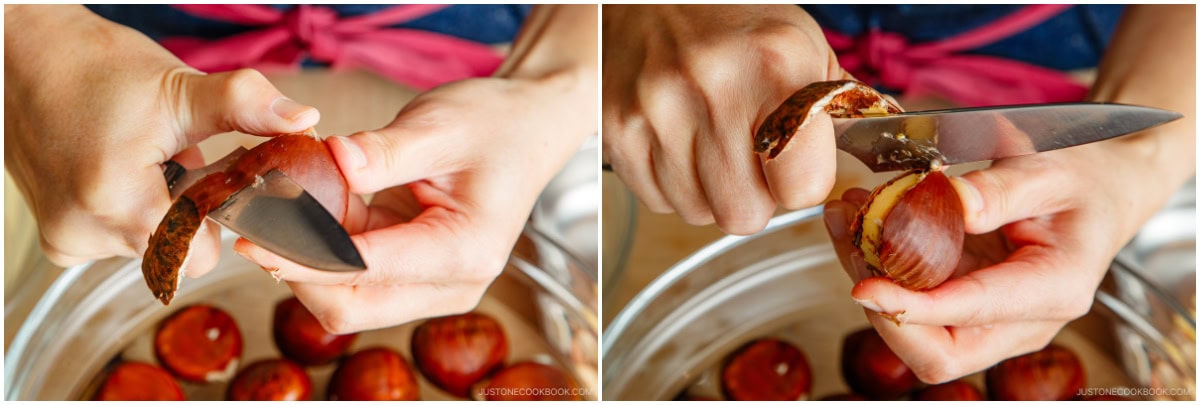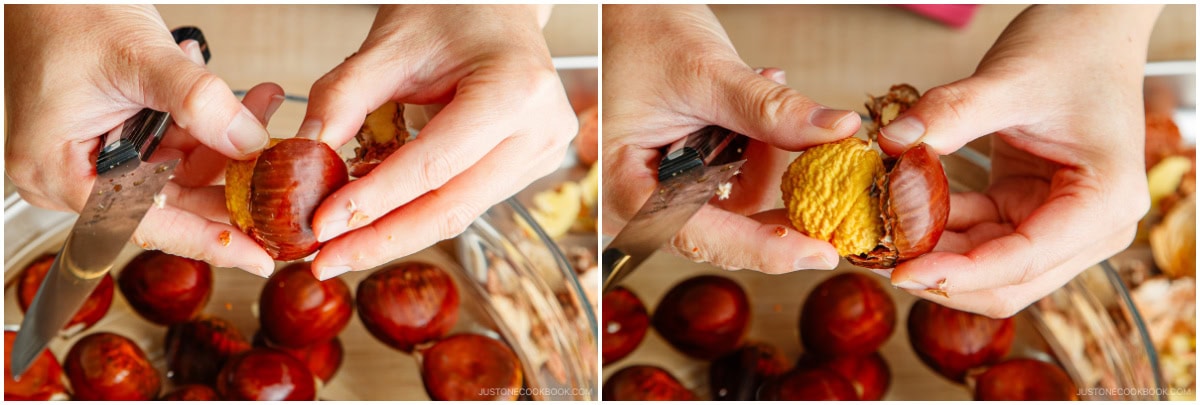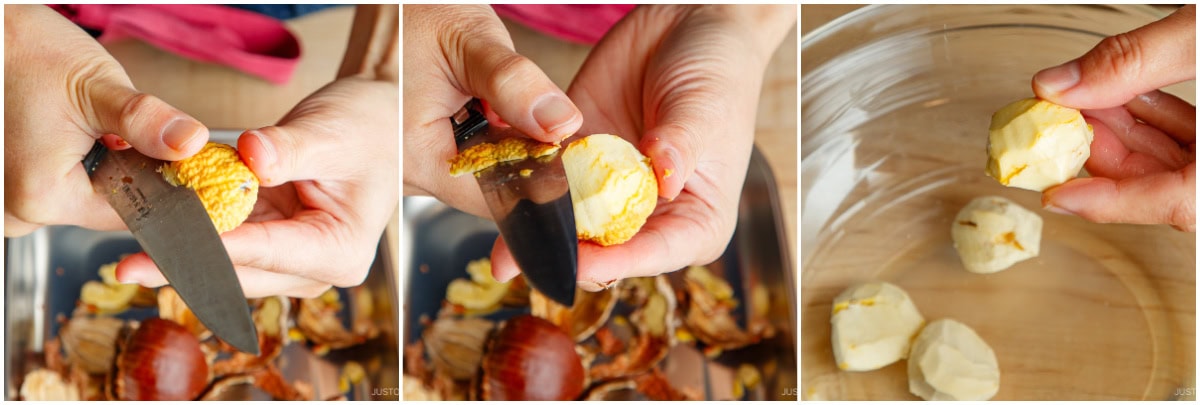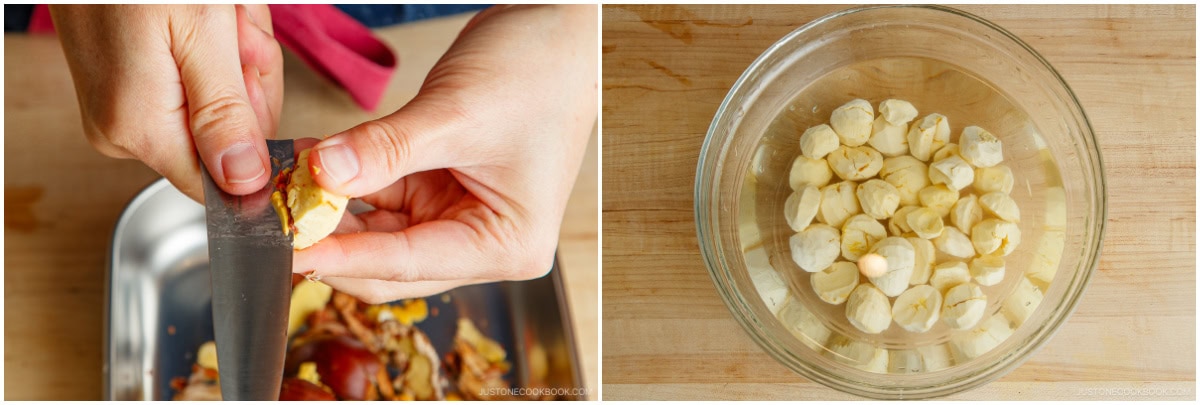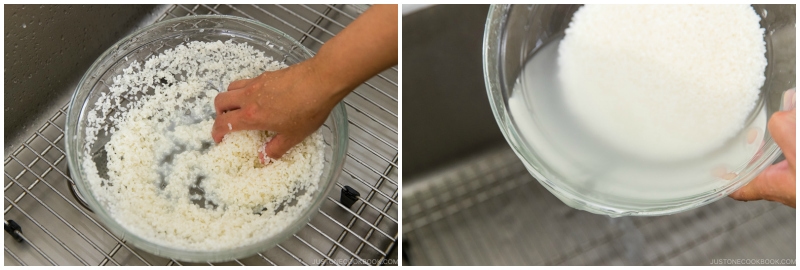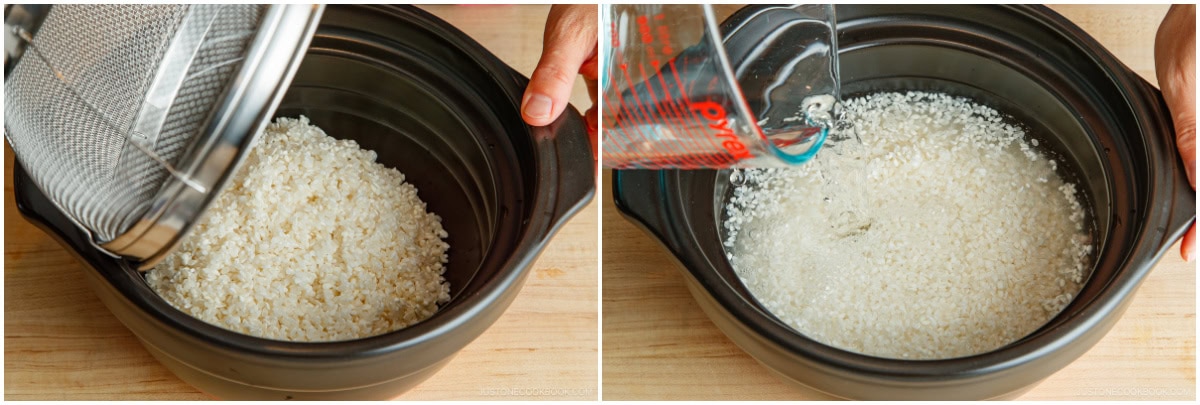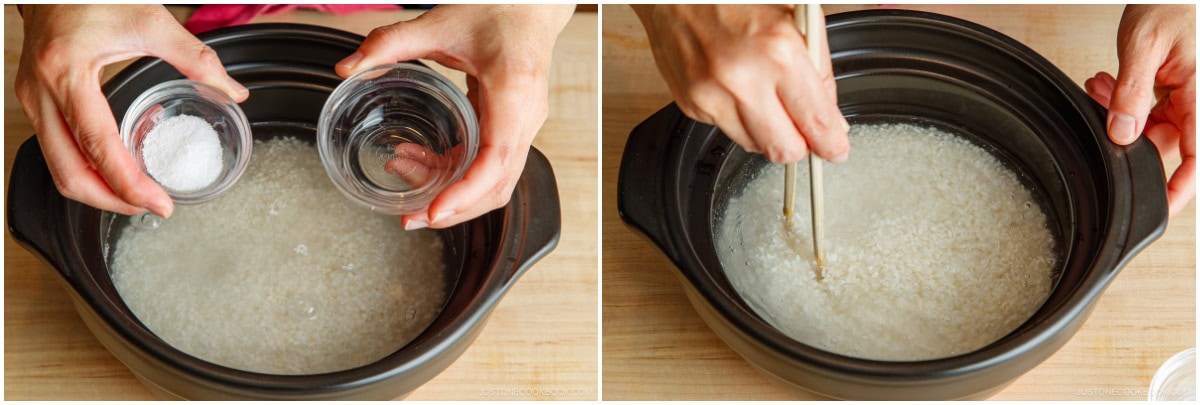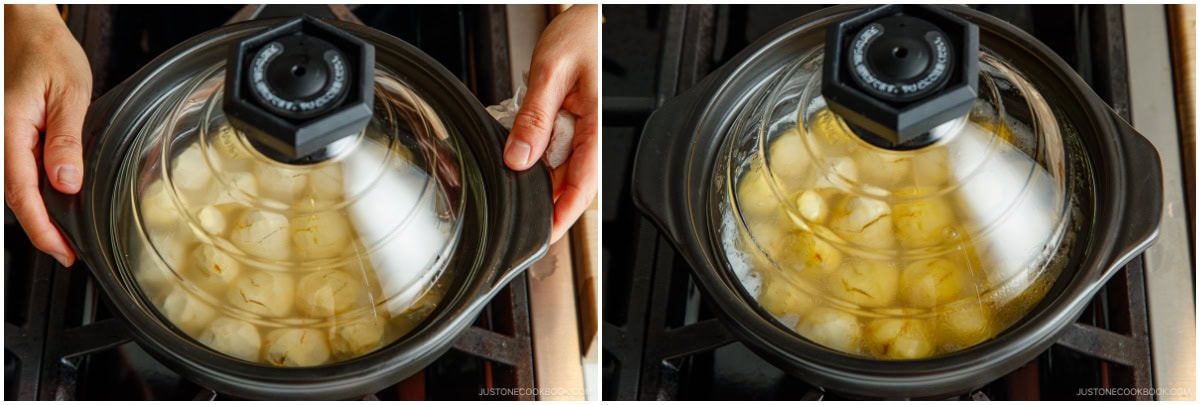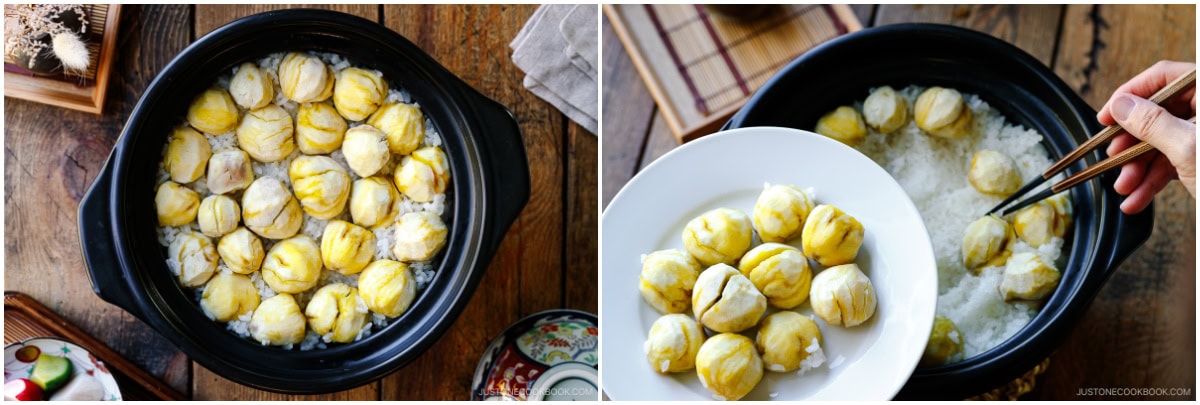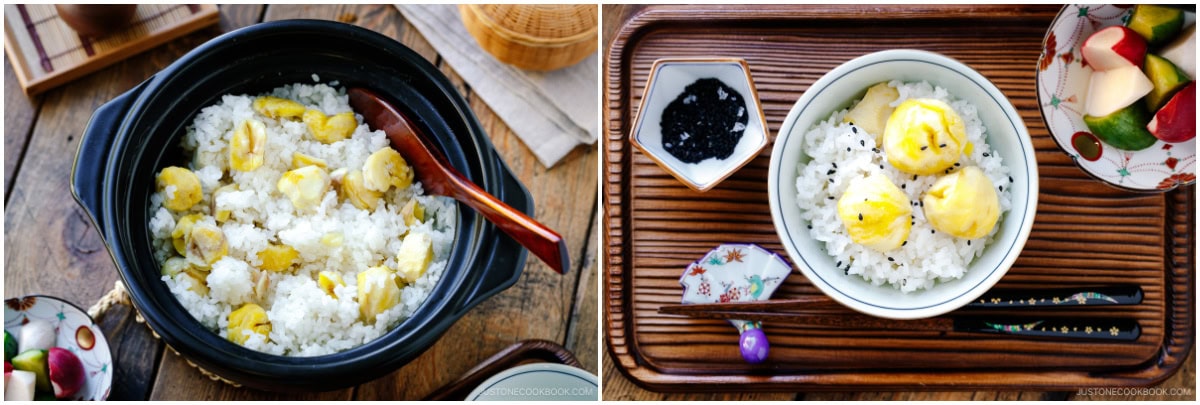Autumn brings an abundance of delicious seasonal produce like Japanese chestnuts. Each fall, I eagerly anticipate the special dishes we make with them like today’s recipe for nutty and sweet Japanese Chestnut Rice (Kuri Gohan). It’s one of the signature dishes that marks the arrival of autumn in Japan—a fragrant, comforting dish that brings back fond memories. For more rice dishes featuring fall produce, try my Japanese Sweet Potato Rice, Matsutake Gohan (Wild Pine Mushroom Rice), and Japanese Mushroom Rice next!
Why I Love This Recipe
What a special, seasonal dish! Chestnuts are a precious cultural ingredient in Japan. When I make this dish, it sparks conversation and a cultural connection with my kids. Simple yet strikingly impressive. The beauty of this rice dish lies in its simplicity. The appearance of chestnuts captures the essence of fall and evokes a sense of nostalgia. Its aromatic flavor and fluffy texture are irresistible. There’s nothing like the combination of fresh Japanese chestnuts and new crop short-grain rice. I hope you give this recipe a try!
Ingredients for Chestnut Rice
Fresh Japanese chestnuts Japanese short-grain white rice Japanese short-grain glutinous rice (sweet rice) Sake Salt
Find the printable recipe with measurements below.
Substitutions
Japanese rice: I highly recommend using Japanese short-grain rice here, as its texture and flavor differ significantly from other varieties. You can also use Korean short-grain rice, which is the closest alternative. Glutinous rice: I add Japanese short-grain glutinous rice to the mix for a slightly chewy and more tender texture. If you don’t have it, you can use Japanese short-grain rice instead. Sake: We add sake to infuse the rice and ingredients with flavor that enhances the richness and umami of the mixed rice. If you don’t have it, you can just skip it.
Key Equipment
A heavy-bottomed pot – I use a Hario Gohangama donabe, a Japanese ceramic/earthenware pot, but you can use a Dutch oven instead. You can also make this recipe using a rice cooker; simply press start and cook as usual.
How To Make Chestnut Rice (Kuri Gohan)
Preparation
Step 1 – Remove the tough outer shell and the thin, papery inner skin. Soak the chestnuts in warm water for 30 minutes. For each chestnut, use a knife to remove the tough bottom, then peel off a strip along one side moving toward the tip. Peel away the outer shell with your fingers. The papery skin usually comes off with the shell. Step 2 – Peel away the bumpy flesh and shape the chestnuts. For a more attractive presentation, it’s best to make large cuts on the surface of the chestnuts to resemble the facets of a diamond. Step 3 – Soak the chestnuts in water for at least 30 minutes. This helps remove astringency and yields a beautiful creamy yellow color. Don’t skip this step.
Assemble
Step 4 – Put everything in the pot. Add the rinsed and well-drained rice, measured water, and seasonings to the pot. Then, place the chestnuts on top in a single layer so they cook evenly. Soak for 20–30 minutes before cooking to allow the rice’s core to absorb moisture.
Cooking
Step 5 – Cook and steam the chestnut rice. For my donabe rice pot, I cook on medium-high heat for 12–13 minutes. When the cooking time is up, remove it from the heat and let it steam with the lid on for 15–20 minutes. Step 6 – Fluff the rice. Set aside several beautiful chestnuts for serving, then gently fluff the rice with the rest of the chestnuts. Step 7 – Serve. Serve in individual rice bowls and sprinkle with black sesame seeds and salt.
Variations and Customizations
Enhance the flavor with dried kelp seaweed. Some people add a small piece of kombu between the rice and chestnut layers during cooking to increase umami and aroma. Add more seasonings. I keep my seasonings simple to let the naturally sweet and nutty chestnut flavor shine. If you wish, you can add a bit of soy sauce and/or mirin (Japanese sweet rice wine) to the cooking liquid in addition to the sake and salt. Just be sure to reduce the amount of water in the recipe; you’ll want to keep the overall measurement of cooking liquid the same. Skip the glutinous rice. You can make chestnut rice without glutinous rice. It will be less soft and tender overall, but it won’t become too hard the next day since there is no glutinous rice in it.
What To Serve with Chestnut Rice
I enjoy serving fragrant chestnut rice with various side dishes to create a full meal. Here are some suggestions, but feel free to mix and match:
Sanma Shioyaki – This classic autumn grilled fish is a perfect pairing! Stir-Fried Bitter Melon and Eggplant with Miso – Add more textural contrast to the meal with this unique stir-fry. Kinpira Renkon – Another fall favorite, lotus root is a great side dish if you enjoy its crisp and tender texture. Miso Soup with Enoki Mushrooms and Ground Sesame – This soup will warm you right up on a cool fall evening.
Storage and Reheating Tips
To store: You can keep the leftovers in an airtight container and store in the freezer for up to a month. To reheat: Take out the glass container of frozen rice from the freezer. Remove the lid and loosely cover the rice with a paper towel. Then, microwave until the rice is hot all the way through.
More Mixed Rice Recipes
There are so many ways to prepare Japanese mixed rice, and I think you’re going to enjoy these delicious recipes, too:
Takikomi Gohan (Japanese Mixed Rice) Japanese Sticky Rice with Chicken and Vegetables (Okowa)
Editor’s Note: This post was originally published on November 27, 2013. It was republished on November 4, 2024, with new images, a revised recipe, and more helpful information.
